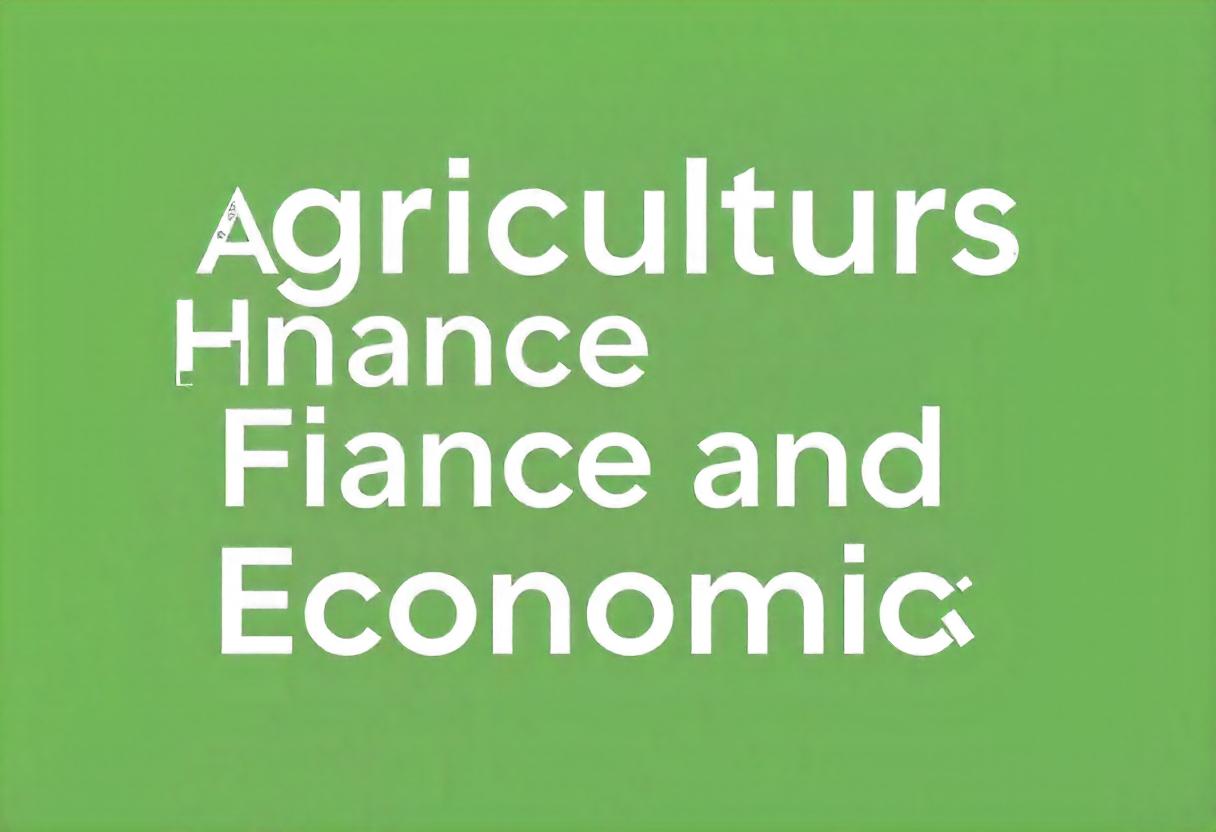
Agriculture finance and economics play a critical role in shaping the global agricultural landscape. The sector depends on financial resources to sustain growth, while economic principles guide production, pricing, and distribution of agricultural products.
Importance of Agricultural Finance
Agricultural finance is essential for farmers and agribusinesses to access the necessary resources for production. It helps cover costs related to seeds, equipment, fertilizers, and labor. Without adequate financial support, farmers would struggle to improve productivity, adopt new technologies, or expand operations.
Lending institutions, including commercial banks, cooperatives, and microfinance organizations, provide various loan options and credit facilities to farmers. Access to these financial services enables them to manage risks associated with unpredictable weather conditions, fluctuating commodity prices, and pest infestations.
Role of Government in Agricultural Finance
Governments often play an active role in agricultural finance by providing subsidies, grants, and low-interest loans to farmers. These programs aim to promote food security, support smallholder farmers, and encourage sustainable farming practices. By reducing the financial burden on farmers, governments can stabilize food production and ensure the long-term viability of the agricultural sector.
In addition, many governments invest in rural infrastructure, such as roads, irrigation systems, and storage facilities, which help reduce production costs and increase access to markets. These investments further stimulate the agricultural economy by enhancing farmers’ productivity and income.
Economic Factors Affecting Agriculture
Agriculture is highly dependent on several economic factors, including supply and demand, inflation, and trade policies. Changes in any of these factors can significantly impact agricultural production and profitability.
Supply and demand fluctuations often lead to price volatility in agricultural commodities. For example, a bumper crop may result in an oversupply, driving prices down, while a poor harvest can create scarcity and increase prices. Farmers must navigate these market dynamics to optimize their profits.
Inflation is another important factor, as rising input costs can reduce farmers’ purchasing power. For instance, an increase in fuel prices can raise the cost of transportation and machinery operation, leading to higher overall production expenses.
Trade policies also influence agriculture, especially in export-oriented countries. Tariffs, trade agreements, and export restrictions can either enhance or limit access to global markets, affecting the competitiveness of agricultural products on the world stage.
Agricultural Investment and Profitability
Agricultural investment involves funding projects that aim to improve agricultural productivity, sustainability, and profitability. Investors are often drawn to the agricultural sector due to its vital role in feeding the growing global population and the opportunities for technological innovation.
Investments in areas such as precision agriculture, biotechnology, and sustainable farming practices offer significant potential for improving efficiency and reducing environmental impact. For instance, precision agriculture uses data analytics and advanced technology to optimize water usage, reduce waste, and increase yields.
The profitability of agricultural investments is closely tied to the successful implementation of these innovations. However, investors must also consider risks such as climate change, market volatility, and policy changes that may affect returns on investment.
Risk Management in Agricultural Finance
Risk management is a crucial aspect of agricultural finance, as the sector is particularly vulnerable to various risks. Farmers must contend with unpredictable weather conditions, pests, diseases, and market fluctuations, all of which can threaten their livelihoods.
To mitigate these risks, financial institutions offer products such as crop insurance, weather-based insurance, and price protection schemes. These financial tools provide farmers with a safety net, allowing them to recover from losses and continue operations in the face of adversity.
In addition to formal financial products, many farmers rely on informal risk-sharing arrangements within their communities. These networks help farmers pool resources, share knowledge, and collaborate on problem-solving efforts, further enhancing their resilience to financial shocks.
Global Trends in Agriculture Finance and Economics
Several global trends are shaping the future of agriculture finance and economics. One significant trend is the increasing use of digital financial services, which enable farmers to access credit, make payments, and receive subsidies through mobile platforms. These innovations are particularly beneficial for smallholder farmers in remote areas, where traditional banking services may be limited.
Another trend is the growing focus on sustainability in agriculture finance. Investors and governments alike are increasingly prioritizing projects that promote environmental stewardship, reduce greenhouse gas emissions, and conserve natural resources. This shift reflects a broader recognition of the need to balance agricultural productivity with long-term ecological sustainability.
Lastly, global trade dynamics continue to influence the agricultural sector, as trade tensions, shifting consumer preferences, and evolving trade agreements shape the flow of agricultural products across borders. As a result, farmers and agribusinesses must remain agile and adaptive to changing market conditions to remain competitive in the global economy.